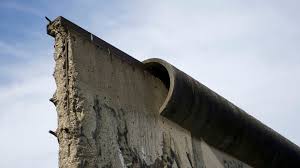Description
The Berlin Wall was a concrete barrier that physically and ideologically divided Berlin from August 13, 1961, to November 9, 1989. Erected by the German Democratic Republic (GDR), or East Germany, the Wall was designed to prevent East Germans from fleeing to West Berlin and, by extension, to West Germany. The Wall symbolized the Cold War division between the communist East and the capitalist West and was a stark representation of the broader geopolitical struggle between the Soviet bloc and the Western allies.
The Berlin Wall was constructed overnight and consisted of a series of walls, barbed wire fences, and watchtowers. It divided the city into East Berlin, the capital of East Germany, and West Berlin, an enclave surrounded by East German territory. The Wall was heavily fortified with guard towers, patrols, and a "death strip" that included obstacles such as sandbanks and dog runs. Attempts to cross the Wall were often met with deadly force, leading to numerous casualties among those attempting to escape.
The Wall's fall in November 1989 was a pivotal moment in the end of the Cold War and the reunification of Germany. The collapse was precipitated by widespread public pressure, political changes within Eastern Europe, and the gradual easing of Cold War tensions. The Berlin Wall remains a powerful symbol of the struggle for freedom and the division of ideologies, and today, remnants of the Wall serve as historical monuments and reminders of the city's tumultuous past.
The memorial includes preserved sections of the Wall, a watchtower, and a preserved section of the "Death Strip," where people attempted to escape from East to West Berlin.
The memorial features several key components, including the Documentation Center, which houses exhibits and personal stories about the Wall’s construction, its role in the Cold War, and the experiences of those affected by its presence. The site also includes a Chapel of Reconciliation, a reflective space dedicated to the victims of the Wall and the enduring hope for unity. The memorial’s layout provides a powerful narrative through visual displays, personal accounts, and historical artifacts.
Tourists should visit the Berlin Wall Memorial to gain a deep understanding of the Wall’s historical significance and its impact on Berlin’s social and political landscape. The site offers an immersive experience with its preserved structures and informative exhibits, providing insight into the harsh realities of the divided city and the eventual reunification. As a key destination for those interested in Cold War history and the struggle for freedom, the Berlin Wall Memorial offers a moving and educational experience.
Location
-
Bernauer Str. 111, 13355 Berlin, Germany






